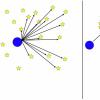In general, the seasonality claim is bogus. As the chart indicates, neither South America nor Asia (I didn't look at the Middle East) has it. India is cut in half by the 23rd parallel (that's why I didn't include it), but there's no hint of seasonality there either. The only way to see seasonality is to cherry pick the data.
Coronavirus transmission is likely affected by climate and weather parameters such as humidity and temperature.
Therefore it is reasonable to assume that in countries or US states which have seasons where these weather parameters vary in a way that affects transmission, you are going to get seasonality. Whereas across the year if these parameters vary in a way which does not affect transmission, you are not going to get seasonality.
So seasonality will depend on the country's climate.
Also, do not assume that when there is seasonality, the peak coronavirus seasons will be the same for all seasonal countries. As you will see below, both the US northeastern costal states and southeastern costal states have seasonality, but the peak seasons are at different times.
In the US northeast, there is a whole cluster of US costal states from New Hampshire down to Maryland which show strong seasonality, as the graphs on their worldometer page indicate. These northeastern states show a strong peak in April, then a pronounced major drop during the summer, followed by another strong peak in January.
Northeastern Costal States Coronavirus Cases/Deaths Graph Over Time
https://www.worldome.../new-hampshire/
https://www.worldome...massachusetts/
https://www.worldome...a/rhode-island/
https://www.worldome...sa/connecticut/
https://www.worldome...s/usa/new-york/
https://www.worldome...usa/new-jersey/
https://www.worldome...s/usa/maryland/
But if you go further down the eastern seaboard, as you get to hotter climes, the seasonality starts to look different. For the southernmost southeastern costal states, there is no peak in April, and instead the peak happens in July, then a slight drop in autumn, followed by another peak in January.
Southeastern Costal States Coronavirus Cases/Deaths Graph Over Time
https://www.worldome...s/usa/virginia/
https://www.worldome...north-carolina/
https://www.worldome...south-carolina/
https://www.worldome...us/usa/georgia/
https://www.worldome...s/usa/florida/
Edited by Hip, 16 February 2021 - 09:13 PM.
 coronavirus-data-explorer(3).png 227.3KB
0 downloads
coronavirus-data-explorer(3).png 227.3KB
0 downloads coronavirus-data-explorer(4).png 269.99KB
0 downloads
coronavirus-data-explorer(4).png 269.99KB
0 downloads































































